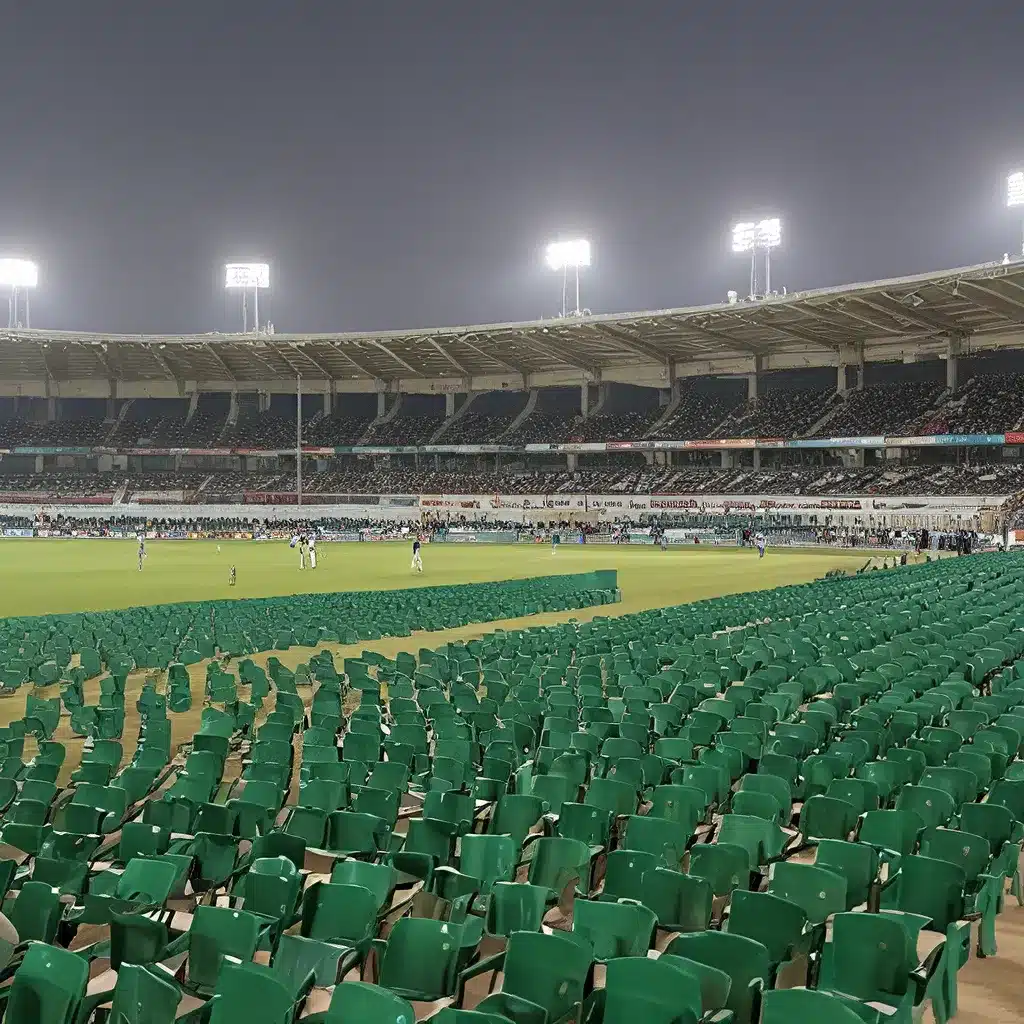
The Historical Legacy of Gaddafi Stadium
Gaddafi Stadium, located in Lahore, Pakistan, is a renowned cricket stadium that has witnessed pivotal moments in the history of the sport. This iconic arena, originally known as Lahore Stadium, was renamed in honor of the late Libyan leader Muammar Gaddafi, who played a significant role in its development. The stadium’s rich history and cultural significance have made it a cherished landmark, not only for cricket enthusiasts but also for the broader community.
The stadium’s origins can be traced back to the late 1950s when the Pakistani government recognized the need for a world-class cricket facility in the region. The construction of the stadium was a collaborative effort, involving both local and international expertise. Renowned architect Nasreddin Murat-Khan, who had previously worked on the design of the Shah Faisal Mosque in Islamabad, was tasked with the stadium’s architectural planning and execution.
The stadium’s inauguration in 1959 marked a significant milestone in Pakistan’s cricketing history. It quickly became the nation’s primary venue for international cricket matches, hosting numerous Test matches and One Day Internationals. The stadium’s strategic location, within the heart of Lahore, further cemented its importance as a hub for the sport, drawing in passionate fans from across the country.
The Architectural Marvels of Gaddafi Stadium
One of the most striking features of Gaddafi Stadium is its unique architectural design, which seamlessly blends traditional and modern elements. The stadium’s distinctive concrete structure, with its sweeping arches and graceful lines, has become an iconic landmark in the city of Lahore. The design, inspired by the region’s rich cultural heritage, is often praised for its harmonious integration with the surrounding environment.
The stadium’s seating capacity, which can accommodate over 27,000 spectators, is another noteworthy aspect of its design. The tiered seating arrangement allows for an immersive viewing experience, with fans situated close to the action on the pitch. The strategic placement of the stands ensures that even the furthest seats offer an unobstructed view of the proceedings.
Gaddafi Stadium’s architectural prowess extends beyond its grand appearance. The facility boasts state-of-the-art amenities, including well-equipped changing rooms, modern press boxes, and expansive hospitality areas. These features not only enhance the overall spectator experience but also cater to the needs of the players, media, and other stakeholders involved in the sport.
The Significance of Gaddafi Stadium in Cricket
Gaddafi Stadium’s significance in the world of cricket cannot be overstated. The stadium has hosted numerous prestigious events, including the 1996 Cricket World Cup, the 2011 Cricket World Cup, and the 2017 ICC Champions Trophy. These international tournaments have solidified Gaddafi Stadium’s reputation as a premier cricketing venue, drawing in fans from around the globe.
The stadium’s rich history is marked by memorable matches and momentous achievements. It has witnessed the triumphs of legendary cricketers, such as Imran Khan, Javed Miandad, and Wasim Akram, who have captivated audiences with their skill and determination. These iconic performances have etched the stadium’s name in the annals of cricket history, making it a revered destination for sports enthusiasts.
Gaddafi Stadium’s significance extends beyond just hosting international matches. It has also served as a training ground for aspiring cricketers, nurturing the next generation of talent. The stadium’s world-class facilities and dedicated coaching staff have played a pivotal role in the development of many Pakistani cricket stars, who have gone on to represent their country on the global stage.
The Cultural Impact of Gaddafi Stadium
Gaddafi Stadium’s significance transcends the realm of sports, as it has become an integral part of Lahore’s cultural fabric. The stadium has hosted various cultural events, from music concerts to festivals, further solidifying its position as a multifunctional venue that caters to the diverse interests of the local community.
The stadium’s location, situated in the heart of Lahore, has also contributed to its cultural significance. It has become a gathering place for the city’s residents, who flock to the stadium to celebrate national events, attend religious ceremonies, and participate in community activities. This deep-rooted connection between the stadium and the local population has fostered a sense of pride and ownership among the people of Lahore.
Gaddafi Stadium’s cultural impact extends beyond the city’s boundaries, as it has become a symbol of Pakistani identity and pride. The stadium’s iconic architecture and its association with the country’s cricketing legacy have made it a source of national pride, inspiring a sense of unity and patriotism among Pakistanis. This cultural significance has also attracted international attention, with the stadium becoming a must-visit destination for tourists and cricket enthusiasts from around the world.
The Ongoing Challenges and Future Prospects
Despite its rich history and cultural significance, Gaddafi Stadium has faced its fair share of challenges over the years. The stadium has been affected by political instability, security concerns, and the COVID-19 pandemic, which have disrupted its regular operations and events. These challenges have highlighted the need for a comprehensive strategy to ensure the stadium’s long-term sustainability and continued success.
However, there are also promising developments on the horizon for Gaddafi Stadium. The Pakistani government has recognized the importance of this iconic venue and has invested in its renovation and modernization. Plans are underway to upgrade the stadium’s facilities, including the installation of state-of-the-art lighting systems, the expansion of hospitality areas, and the enhancement of accessibility for spectators.
These improvements are expected to strengthen Gaddafi Stadium’s position as a world-class cricketing venue, capable of hosting major international tournaments and events. Furthermore, the stadium’s management is exploring ways to diversify its offerings, with the goal of attracting a wider range of visitors and enhancing the overall experience for the local community.
As Gaddafi Stadium continues to evolve, it remains a symbol of Pakistan’s rich cricketing heritage and a testament to the power of sports to bring people together. With a renewed focus on preservation, innovation, and community engagement, the stadium is poised to continue its legacy as a beloved and iconic landmark, captivating audiences for generations to come.

